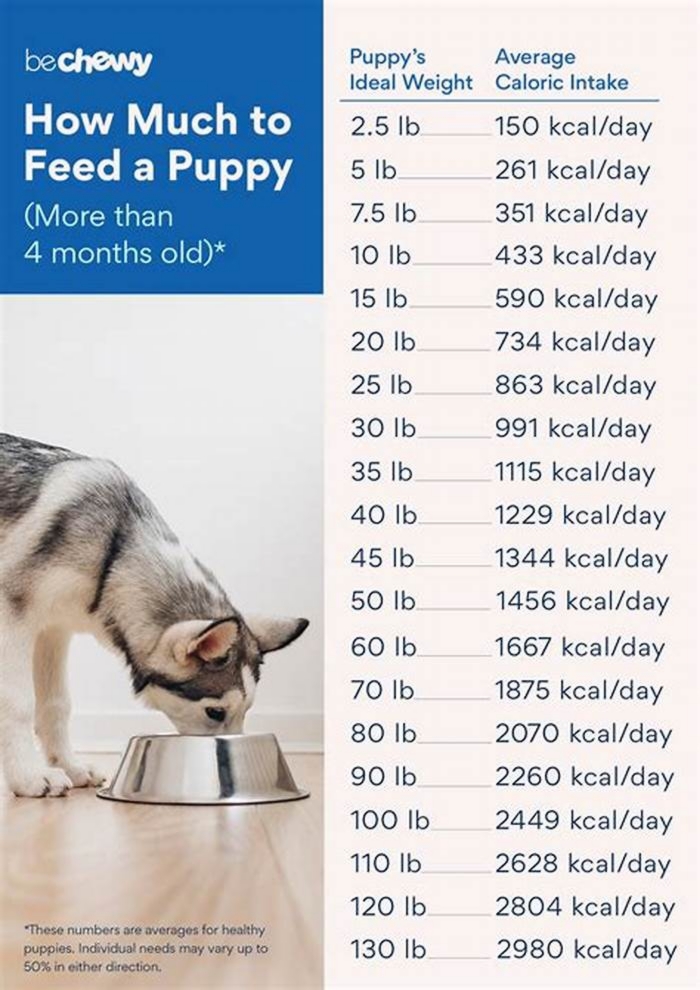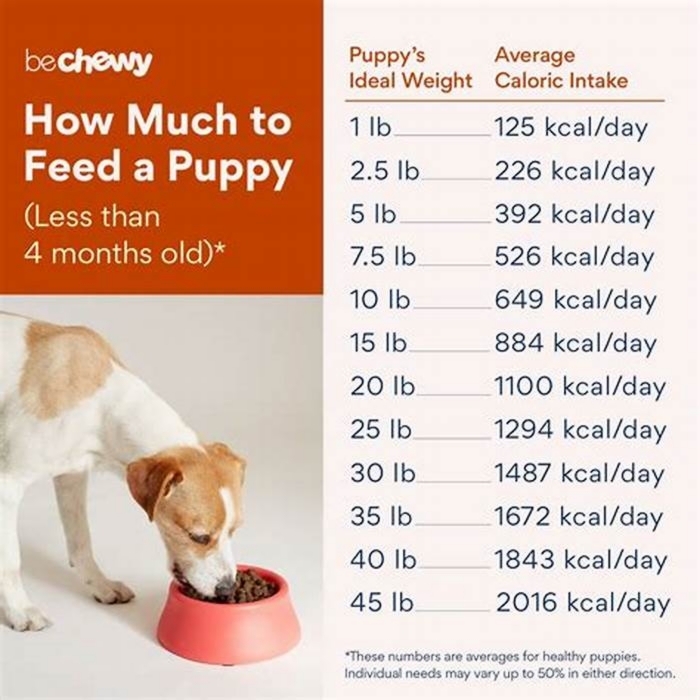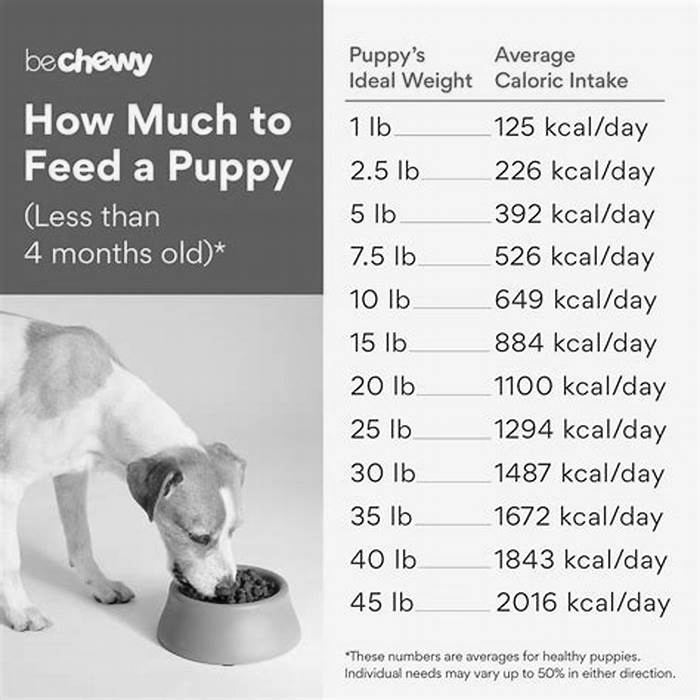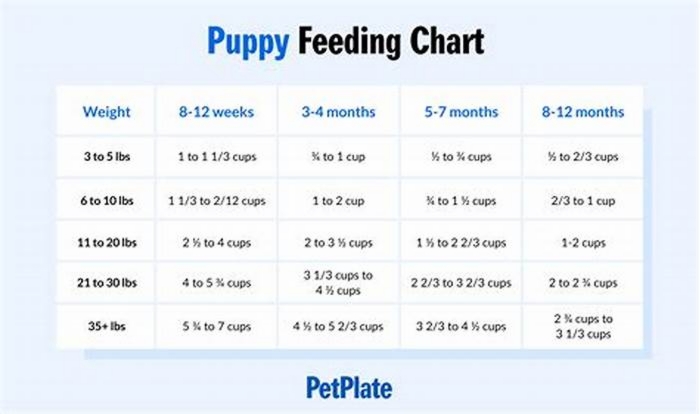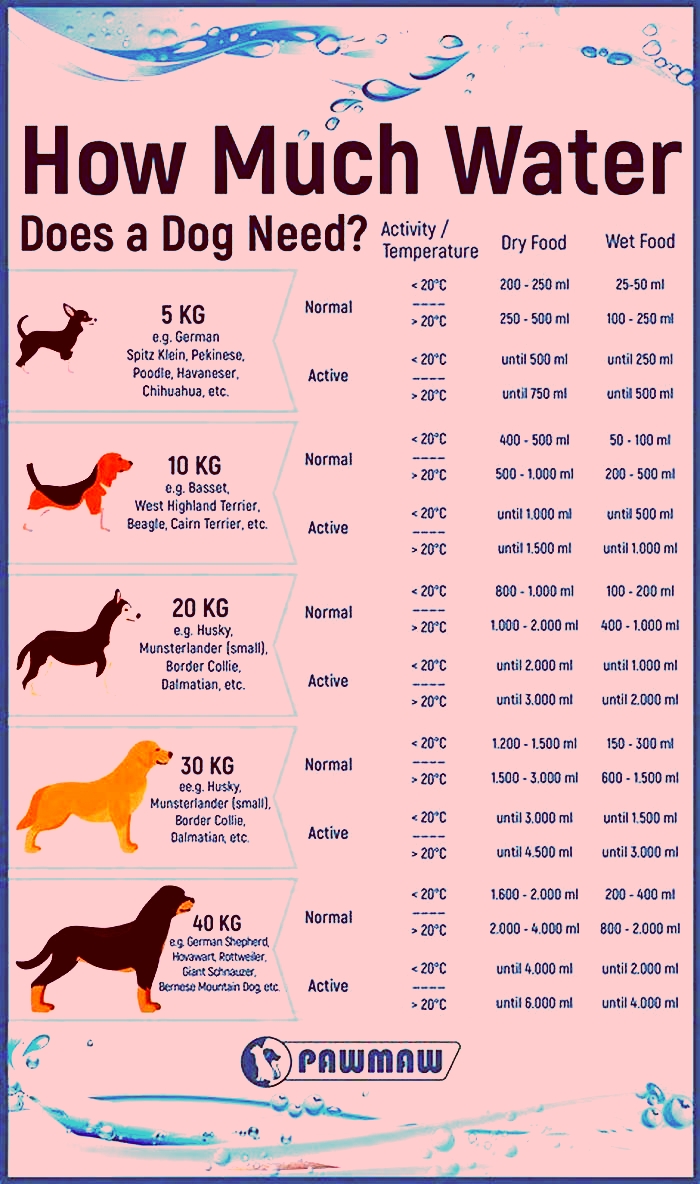How many cups a day should a lab eat
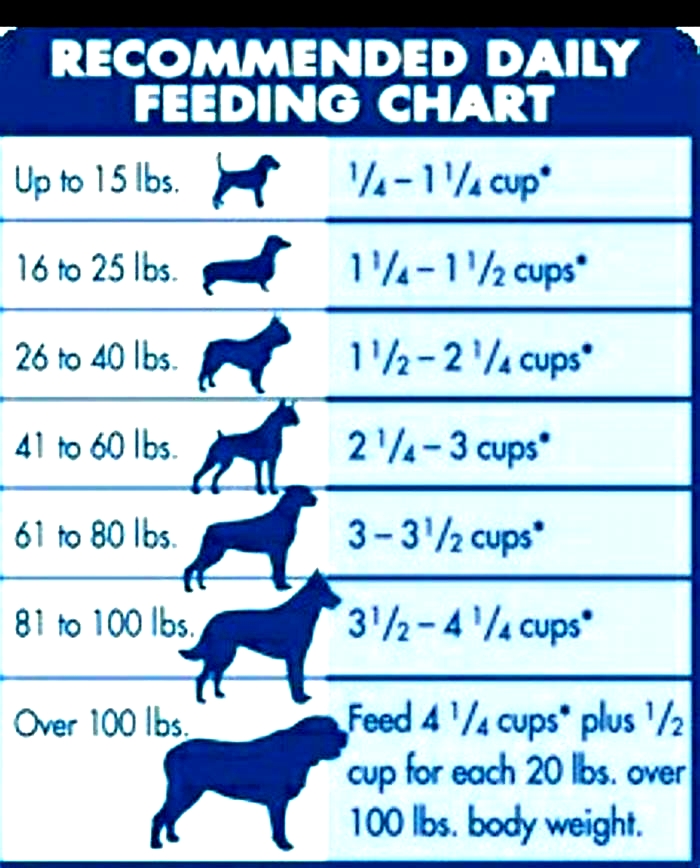
How Much Should a Lab Eat | Labrador Feeding Chart by Age
Labrador Retrievers are known for their friendly, affectionate nature, but they also have big appetites!
As a responsible pet owner, its important to understand: how much should a lab eat, when to switch from puppy food to dog food Labrador, and what to feed your Lab to keep them at a healthy weight and maintain their overall well-being.
For your convenience, we have prepared a Labrador feeding chart by age and jotted down the major factors to look at before feeding your furry pal.
Keep reading to get all the information, you need to make informed decisions about your Labradors diet.
How Much to Feed Labrador Puppy-Feeding Chart
Like other breeds, in the first few weeks, Labrador puppies rely on their mothers milk, which helps to boost their immune system. After 4th week, you can start offering him high-quality puppy-formulated food. It is recommended to feed them at least thrice or four times a day. Their body is at a growing stage, it needs more healthy food for better development.As per AKC, Growing pups should be fed puppy food, a diet specially formulated to meet the nutritional needs for normal development. Feeding adult food will rob your puppy of important nutrients.
Furthermore, its important to feed your Labrador puppy the correct amount of food, so that you dont overfeed them. We have prepared a Labrador puppy feeding chart, which will give you the proper food and calorie ratio.
For instance, if you are raising a young Labrador puppy, its suggested to first check the weight and then select the feeding ratio. If he weighs around 6-15 pounds, then 1 2/3 cups daily is more than enough, with 649 kcal per day.
Note:- Divide per day feeding ratio into four equal intervals and then feed your pup. This will help you to keep a track of the calorie ratio, and you will not overfeed your Labrador puppy.
Adult Labrador Feeding Ratio
Your Labrador nutrient requirements change with age, when they reach adulthood you need to switch their food. It is suggested to start feeding your Lab, adult dog food when he turns one year old.
Along with switching food, you need to change their feeding ratio because as their activity level increases, the demand for food also increases. For your better preference, we have prepared an adult Labrador feeding chart, which will help you to feed him the correct amount of food.
An Adult Labrador with high activity will need more food than one with less activity. For instance, your adult Lab, whose weight is around 65-70 pounds, requires 11 2/3 cups daily with 4529 kcal per day. On the other hand, if he is not an active one then you need to feed him 1811 kcal per day.
Note:- Always seek advice from the vet before switching your pups food. It is suggested to go for high-quality food that is specially formulated for larger breeds.
Senior Labrador Feeding Ratio
When your Labrador turns 7 years old, he enters the senior hood zone. His body structure, eating habits, and activity level all vary with time. You cannot feed him adult dog food, now you have to switch to senior dog food. This is because now his body will require more protein to maintain their joints and muscle health.
For your reference, we have prepared a PDF of a senior Labrador feeding chart, which is bifurcated into weight and activity level.
For instance, your oldie Lab whose weight is around 71-75 pounds, and is moderately active by nature, In such a scenario, it is suggested to feed 3 1/2 cups daily with a total calorie intake ratio of 1338 kcal per day.
On the other hand, if your oldie Lab is not an active one, then it is advisable to cut down the calorie ratio. Without any physical activities, his body wont be able to digest food easily, and this will lead to health issues in the future.
Labrador Feeding Tips
So far you read about the Labrador feeding chart, and how the feeding ratio varies as per their life stage, weight, and activity level. Now, lets have a look at the feeding tips, which will help you to select the appropriate dog food for your furry pal.
Before following the feeding guide, its important to have knowledge regarding the nutrients, weight, activity, level, and foods to avoid.
So, you can select the appropriate dog food for your Lab, as per his health. And feed him the correct amount of food.
Lets quickly explore the important factors:
1. Nutrients Guidelines
One should know how to check the nutrient list while purchasing dog food for their pup. This is because providing high-quality dog food to your Labrador is very important, selecting an appropriate food solves half of your problem.
PetMD states, Nutritional dilated cardiomyopathy (nutritional DCM) is a heart disease Labrador Retrievers may acquire by eating a grain-free diet that contains peas, legumes, or lentils among the top five ingredients. DCM causes the heart to become dilated and unable to function properly.
It has been noticed that few Labradors are allergic to grains, so its recommended to feed grain-free food. But still, you need to check out the ingredients list. There are a few food products, which include peas, lentils, and other ingredients, which are not good for his health and lead to severe health issues in the future.
Here is the essential nutrient list which should be there in your Labs food in an appropriate ratio.
- Meat Protein
- Omega-3
- Omega-6
- Carbohydrates in moderate amount
- Grain-free
- Glucosamine and Chondroitin
- Vitamins and Minerals
Note:- Make sure you are feeding high-quality food enriched with all these essential nutrients. Follow the Labrador feeding chart, it will help you to feed your pup the correct amount of food and calories.
2. Weight Consideration
The ideal weight of an adult male Labrador is around 65-80 pounds, and an adult female Labrador is 60-80 pounds. Its important to maintain your Lab weight because they are prone to obesity. If you do not keep an eye on their feeding habits, then there are chances they will gain unwanted fats.
Furthermore, it has also been noticed that they are one of the greediest breeds, they have the habit of demanding treats. It is advisable not to feed them frequently, it will create health issues.
We recommended you check your Labradors weight and accordingly select the feeding ratio from our given chart. For example, if you are raising an adult Labrador, who weighs around 65-70 pounds, it is recommended to feed him 4529 kcal per day.
Note:- Your Labs feeding ratio solely depends on his age, weight, and activity level. So, you have to keep a track of his weight and calorie intake ratio. This will help you to give your furry pal a healthy and happy lifestyle for a longer period of time.
3. Activity Level
Well, focusing on the activity level is one of the major factors to look upon while feeding your Labrador, it helps you to select the appropriate food ratio as per their body requirement.
Let me explain it to you with an example, suppose you are raising an adult Lab, whose weight is around 71-75 pounds. Your furry pal is a super active one, loves to go for a walk, carries out all the physical activities, etc. In such a scenario, it is recommended to feed, him, 4778 kcal per day.
The more active your Lab is, the more he will require calories to meet his bodys needs for better development. Plus, adult Labradors metabolism works effectively, they can digest food easily if fed in the correct ratio.
Note:- It is suggested to take your Labrador for a walk at least twice a day, and regular exercise is a must for them. This will not only keep him active, but also his metabolism will work effectively, and could easily digest the food.
4. Foods to Avoid
Its very natural to share your meal with the furry pal, but you have to be careful because you cannot feed everything to your dog. Their body cannot take all types of ingredients.
Heres a list of ingredients, which you should avoid feeding your Labrador.
- Nuts
- Chocolate
- Onion and Garlic
- Alcohol
- Milk
- Ice cream
- Cheese
- Caffeine
- Yeasty Dough
Make a habit of checking the ingredient list, and avoid toxic ingredients which can harm your furry pals health. Once you are cleared with the ingredients, select the appropriate one for your Lab and feed him.
You can refer to our Labrador feeding chart. It will give you an idea regarding the food and calorie ratio so that you wont jumble up and end up overfeeding your furry pal.
Note:- Consult the vet before selecting commercial dog food for your Lab because they will guide you on which ingredients are more suitable to your furry pals body, and can easily be digestible.
FAQs
How much food should I feed my Labrador?
Generally, it is recommended to feed 11 1/2 cups daily to your healthy adult Labrador, but this feeding ratio varies. It solely depends on your Labs life stage, weight, and activity level. For instance, if you are raising an adult Lab but is not an active one, then it is suggested not to feed him more calories. As his body wont be able to easily digest it, which will lead to weight gain and other health issues in the future.
Why labs are always hungry?
It has been noticed, Labrador is the greediest one, they keep demanding tempting treats. Its not like they are always hungry, out of their eating habits they want more and more food. Even after feeding him an ample amount of meals, if he is demanding treats, then dont give him. This is because it will lead to overfeeding will gain weight and health complications.
Is rice good for Labrador?
Yes, rice is good for Labrador. Many dog food brands include brown rice in their meal. If you feed rice to your Labrador, its good, it will make his immune system and metabolism stronger and will work effectively. However, always feed him in limits because overfeeding is not good for his health.
Is boiled egg good for Lab?
Eggs are good for dogs, it contains protein, vitamin, and fatty acid, which is good for their health. You can feed boiled eggs to your Labrador, it will boost his immune system, and make metabolism more effective. In fact, eggs are good for large breeds.
Well, Its a Wrap!
Now, we know feeding a Labrador involves choosing high-quality food, and feeding them the correct amount of food. Furthermore, keep a track of their weight, and activity level, and accordingly feed them. This will prevent you from overfeeding him.
Labradors are the greediest breed, even if their stomach is full, they will demand more treats. So, you have to be very careful, while feeding him, and make sure your pup carries out daily exercises.
By following these guidelines, you can help your Lab maintain a healthy weight and enjoy a long and happy life.
Feel free to download our Labrador feeding chart, for your future reference.
REFERENCE:
- Heinze, C. V. R. (2022, August 17). All About Ash. Clinical Nutrition Service at Cummings School. Retrieved March 3, 2023, from https://vetnutrition.tufts.edu/2022/08/all-about-ash/
2. John, J. D. (2023, March 3). What is Ash in Dog Food? And Its Importance. DogLikesBest. Retrieved March 3, 2023, from https://www.doglikesbest.com/what-is-ash-in-dog-food
3. John, J., DVM. (2023, March 7). How Much Should a Lab Eat | Labrador Feeding Chart by Age | DogLikesBest. DogLikesBest. Retrieved March 7, 2023, from https://www.doglikesbest.com/labrador-feeding-chart/
Julia is a Board Certified Veterinary Nutritionist, practicing veterinarian in a non-profit animal hospital and feline sanctuary located in Rochester, NY. She is also a full-time veterinary advisor at DogLikesBest. She focuses on writing healthcare-related topics including dog foods, treats, veterinary diets, food for specific healthcare features, etc. Moreover, any article on DogNeedsBest that has to concern feline health in any way, goes under her scrutiny before being published.
Labrador Retriever Puppy Feeding Chart: How Much To Feed Your Lab Puppy
The Labrador Retriever is Americas number one dog breed and has been for 30 years and counting. He is friendly, infectiously happy, fun, obedient, affectionate, and more. But for him to grow into the typical Labrador that we all know and love, he needs to be cared for properly. Feeding him the best nutrition plays a huge role.
But theres more to it than just feeding the best nutrition. And youve probably got a few questions on your mind. How much do you need to feed your puppy? How does it change as he grows? And how do you know if youre feeding him the right food? Puppy nutrition can be a little tricky, but this guide answers all of these questions and much more.
Whether youre about to welcome a Lab puppy into your life (congrats!) or you feel out of your depth and not sure if youre feeding your pup correctly (dont worry, weve all been there), youve come to the right place. So, lets get you started on your Labrador puppy feeding journey.
Lab Puppy Feeding Chart At A Glance
How Much Should A Lab Puppy Eat?
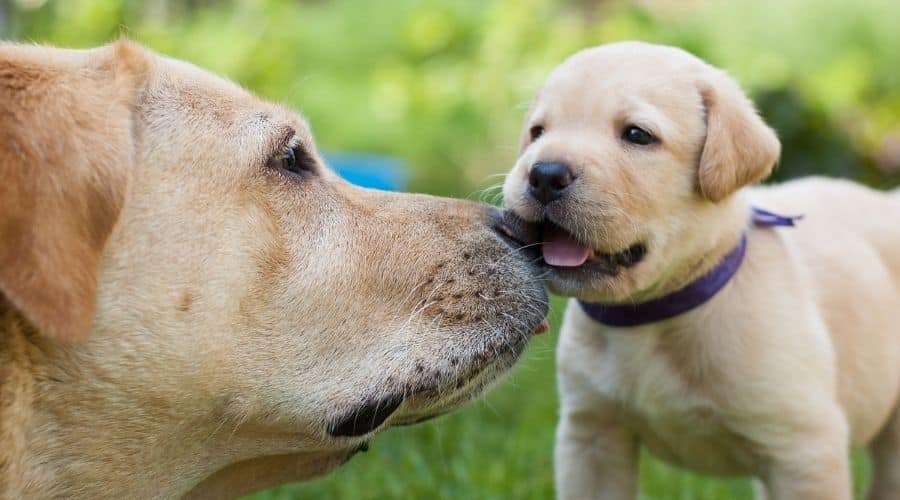
Remember that all dogs are different, but here are the general rules of how much a Lab puppy should be eating week by week. If you are curious about more details regarding your dogs growth milestones, you can consult our Labrador Retriever growth charts.
Week 1
In the first few weeks of your pups life, he eats (or drink) his mothers milk. The first week is crucial for puppy development, and it determines just how healthy a pup he will become. Mothers milk is full of colostrum, which provides the pups with the infection and germ-fighting protection their immune system needs. Receiving these antibodies in the first few days is essential for your pups health.
Its important to let the mother nurse their pups as much and for as long as possible. Unfortunately, some mothers reject their pups, and some are simply unable to produce any or enough milk due to health problems. If this happens, you need to contact your vets, who provide the supplements that your Lab pup needs.
Week 2
At two weeks old, your Lab pup still feeds on his mothers milk. Already, youll probably be able to see the difference between the strongest and weakest pups in the litter. If you can, try to help ensure that the smallest pups get to their mothers milk before the stronger pups. If not, you can make up the difference with puppy formula yourself. Itll be hard work, but you need to give them the best possible start to life.
Week 3
At three weeks, curious Lab puppies have figured out how to coordinate their legs to explore. This means that theyll need extra fuel as they are now moving more. Many puppies also begin to develop their puppy teeth at this stage too. Some breeders introduce their pups to softened kibble or fresh food at this point. But its best to let their mother continue nursing them for a little bit longer.
Week 4
The arrival of the fourth week brings with it an exciting time for Lab puppies because now they get the chance to experience something other than just their mothers milk. Although their diet still is predominantly milk, softened food should be introduced to their diet. Any drastic changes in their diet can upset their stomach, so its important to introduce it gradually.
Mix a small handful of fresh food or kibble with water the mixture should be 1/4 food and 3/4 water. Dont be surprised if the pups turn their noses up at it the first few times. If they dont seem keen, offer it to them several times a day. But never, ever force them. Theyll try it when they are ready. They continue feeding on mom as and when they want to.
Week 5
Most Lab puppies have had their first taste of real food by now and a more willing to eat it most days. Although they still nurse when they can, they are now less dependent on their mother. Their mother knows this and enjoys the much-needed rest by spending less time with her pups.
The mother probably stands to feed the pups instead of laying down, as this gives her more control to walk away. This is normal shes not giving up on them. In fact, its a good sign that the puppies are becoming more independent. And mother is happy she has done her job well.
Week 6
All Lab pups should be more interested in eating the new food mixture than their mothers milk at six weeks. Although they still probably try to sneak in a few last milk sessions while they can. If your pup is doing well on the new food mixture without experiencing any adverse effects, its time to change it. The mixture should be gradually changed throughout the week until it becomes 3/4 food and 1/4 water.
Week 7
At seven weeks, Lab puppies should be almost entirely weaned, if not completely. Some hungry pups might be still trying their luck with their mothers milk, but thats all down to mom now. Shell either let them or not, but they no longer need milk. The mixture should be working well for them.
Week 8
Eight week old Lab puppies should now solely be eating dog food and fully weaned. This is usually the time that most puppies are sent off to their new homes. A typical eight-week-old Lab pup consumes around two cups of food a day, split across four different meal sittings. Do not free-feed the pup because itll be tricky to monitor how much they are eating. Plus, two cups of food in one go might cause stomach upset for sure.
Some breeders give new owners enough food for you to gradually switch them to whatever new brand you choose to feed them. If not, youll have to ask the breeder what kind they used and buy a small bag of your own. Be sure to gradually switch them over, and follow the new package instructions. Typically, dog food transitioning takes between 10 and 14 days. Some new owners choose to stick with the same brand.
Week 9
After a week of your Lab puppy being in your home, youll have hopefully established a feeding routine that is working. Stick with this same routine until around 12 weeks. Tweaking it as and when you need to is fine. After all, it needs to work for both puppy and you. At nine weeks, youll be able to feed your pup cooked meats. Just dont fall into the bad habit of feeding him from the table.
Your Lab pup is super curious this week exploring his new surroundings, so hell probably be hungrier than normal. But its important to stick with the routine and food allowance to ensure that he doesnt put on too much weight. Labradors can be very greedy dogs, and they will eat anything and everything in sight.
Week 10
After two weeks of intense exploring and adapting to his new surroundings, your pup should show his appetite more than ever before. Its important to stick to the routine that youve set up. If your pup leaves his food, take it away after 10 minutes. Hell soon learn to eat it when you place it down rather than go hungry for a few hours.
By now, youve probably visited your vet for his first check-up with you. Ask your vet how your pup is doing. Your vet will tell you whether your pup is lacking behind, at a healthy weight, or becoming too chunky. Whatever your vets observations, be sure to follow any new instructions. Too little or too much weight can lead to various health concerns, so its important to get it right.
Week 11
If your Lab pup is forever begging for food and seems completely unsatisfied by his mealtimes, you can up his daily food allowance to three cups a day. This is because around week 11 is the most dramatic growth spurt hell face. But only if he is active, healthy, and you can see his waist. If not, hell have to make do with the smaller food allowance. Stick to the routine and do not feed him extra food in between mealtimes.
Week 12
Twelve weeks is the next change in the Lab puppy feeding schedule. If you upped his food previously, be sure to reduce it back down to two cups. And instead of four meals a day, you can reduce it to three meals a day now. This should be more manageable than before. Three meal sittings are better than two because it helps with the developmental digestive period. Plus, it avoids stomach upset or a drastic change in blood sugar levels.
Week 13
Its important to stick to the new schedule and not feed him in between mealtimes. Labs are curious canines, and hell be forever on his paws and playing. And although you might think he needs more food, he doesnt. Labs are notorious for Oscar-worthy starvation acting but do not fall for it.
His forever-hungry belly leads him to toxic scraps on the floor, dangerous items in the garden, and inedible household objects. Watch out for his surroundings, and keep all food out of reach. Its also a good idea to keep an eye on his poop, as this can give you a good idea about what extra bits he is eating and shouldnt be.
Week 14
Your Lab puppy starts to lose his milk teeth at this stage, so hell be chewing whatever he can to soothe the pain. Eating dried kibble also helps alleviate the discomfort, so dont be tempted to water down his food. But be sure to provide him with chew toys and sticks suitable for teething puppies.
Different Types Of Puppy Food
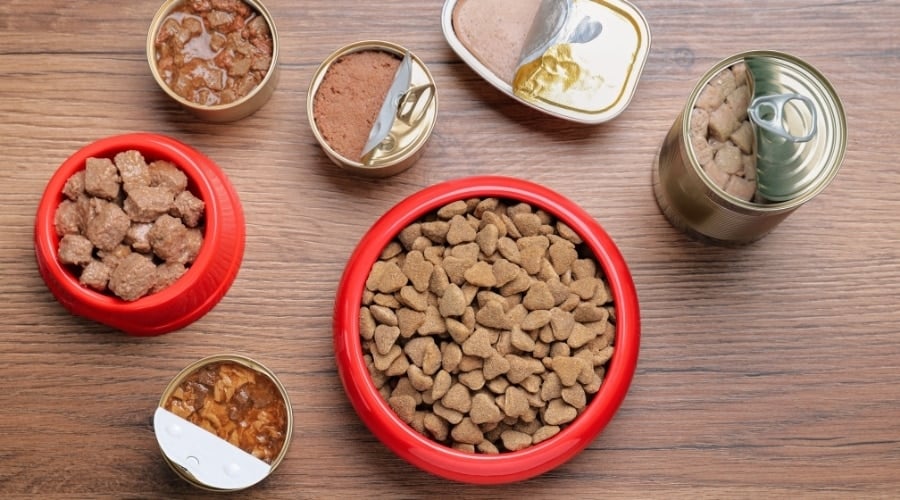
The main types of dog or puppy foods are:
- Fresh (human-grade)
- Kibble (dry food)
- Canned or pouch (wet food)
- Raw or BARF (biologically appropriate raw food)
- Home-cooked food
High-quality dog food like human-grade or kibble has been rigorously tested for its nutritional benefits and safety. So you can be sure that everything your Lab puppy needs to grow healthily is in each bite. Ollie makes one of our favorite grain-inclusive recipes.
Canned or processed foods are often higher in fats, which is not ideal for puppies who need to grow steadily. Especially the greedy Lab.
A raw diet (aka BARF) is often too rich for sensitive puppy stomachs, and it is not always nutritionally balanced.
And unless you are out of food or under your vets instruction, we would advise you not to feed your pup home-cooked food. It is not tested in terms of nutritional value or safety, which could lead to nutritional deficiency.
The Importance Of High-Quality Food
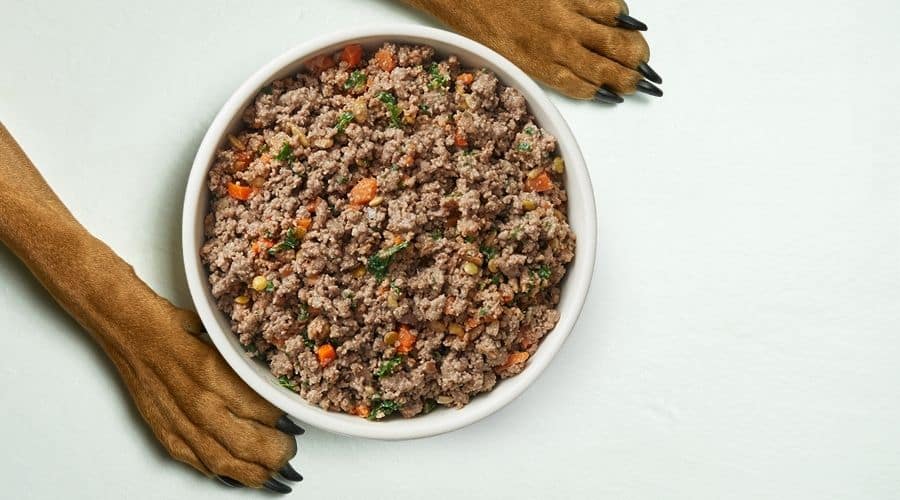
There is a huge difference between basic store-branded and high-quality dog food brands. Poor quality brands rarely contain enough animal protein or omega fatty acids for adults, let alone growing puppies. Plus, they are pumped with fillers with little to no nutritional value, artificial rubbish, preservatives, colors, and chemicals.
Labradors have three life stages; puppyhood, adulthood, and their senior years. Puppyhood is arguably the most important nutritional life stage because it sets the foundations for a healthy life and body. By skimping a few dollars on poor quality food, you are risking your pup becoming nutritionally deficient or developing abnormally. So, nothing else will do for your Lab puppy.
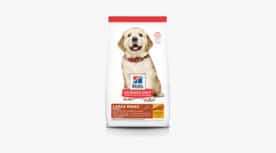
Best For Puppies
Hills Science Diet Large Breed Puppy
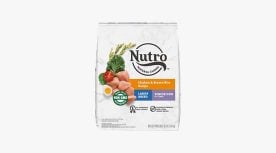
Best For Seniors
Nutro Natural Choice Large Breed Senior
Note: Clicking the above links take you to Amazon.com or each companys website, where you can get additional product information and customer reviews. If you make a purchase, we earn a commission at no additional cost to you.
Why Is Large Breed Puppy Food Important?
Your Lab weighs anywhere between 55 and 80 pounds at maturity, making him a large dog breed. Large dogs grow at a much quicker rate compared to smaller dogs, and this can lead to skeletal abnormalities and joint issues. Hip and elbow dysplasia is a common concern in Labs, so it is important to control skeletal growth. Large breed puppy dog food does exactly that.
The nutrition inside each piece is optimized for controlled bone growth. The specific nutrients that are optimized are calcium, phosphorus, fats, and vitamin D. Dog food designed for small or medium-sized pups does not control bone growth. Sometimes, even those brands that claim to be suitable for all-sized breeds are unsuitable for large dogs. So, like before, nothing else will do here.
What Nutrients Do Lab Puppies Need?

If you stick to high-quality food, you can rest assured that all the nutrients that your Lab puppy needs are found in their meal. But, its also useful for you to know what nutrients he needs and what ingredients to look out for. So, lets take a look at the main components of a well-balanced Lab puppy diet.
Protein
Protein is full of lifes building blocks, which are scientifically known as amino acids. Without these, his body and muscle mass would not have the right power to grow efficiently. Protein can be found in animal meats. The first ingredient in puppy ingredient lists should always be a named animal protein. Meat meals, such as chicken meal, are concentrated forms of protein that are high-quality and full of glucosamine for his joints. The protein content in puppy food should be at least 22%.
Carbohydrates
Protein alone is not enough to keep your pup fueled for the day. This is where carbs step in. Healthy carbs can be found in grains, such as rice, barley, and oatmeal. Or they can also be found in veggies such as peas, sweet potatoes, and lentils.
Fiber
Although fiber technically has no nutritional content, it is essential to your Labs puppy diet. Fiber helps to regulate doggy digestive systems and helps his stools to be firmer and healthier. It is also a low-calorie component that helps to keep your Lab puppy feeling fuller for longer. Look for fiber-rich ingredients such as sweet potatoes, spinach, beet pulp, and chicory root.
Omega Fatty Acids
Although we keep stressing the importance of keeping your Lab trim, essential fatty acids are crucial for healthy puppy development. They help his brain and eyes develop healthily, keep his skin and coat nourished, assist with vitamin absorption, and boost overall wellness. Look for ingredients such as meat meals, fish, fish oils, flaxseed, and canola oils.
Vitamins And Minerals
Just like us humans, dogs also need vitamins and minerals to develop into healthy adults. Without them, their immune system does not develop properly, and they are more at risk from illness and disease. Many high-quality dog foods list real fruits and veggies such as blueberries and cranberries, as well as added supplements. Also, look for nutrient-dense ingredients such as dried kelp and seaweed meal.
How Much Do Lab Puppies Grow Each Week?
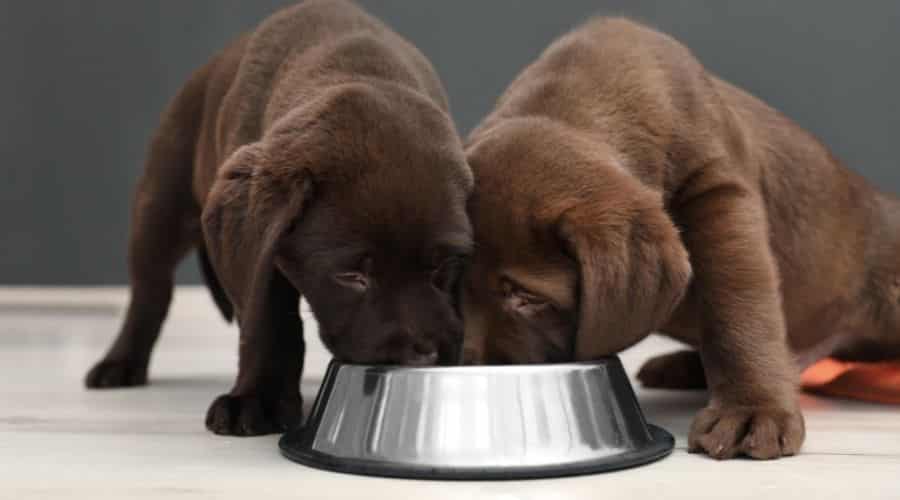
At ten weeks, he should weigh around 20 pounds. Hell be roughly half his expected weight at maturity by the time he reaches 18 to 20 weeks old.
Of course, all dogs are different, and stronger pups grow faster than weaker pups. A great indicator for you to keep an eye on is his waist. If you can see his waist, he is growing well. If you cant, hes too chunky, and if you can see his rib cage, hes too skinny. If you are concerned about his weight or growth, make an appointment with your vet.
Keeping Your Lab At The Right Weight
Labradors are one of the greediest dog breeds on the planet, and if you dont believe us, science actually backs this claim up. Labradors are born with a faulty gene that makes them feel as though they are still hungry. So, its up to you to control how much they eat. Feeding a puppy can be just as demanding as feeding a human baby. It also comes with just as much responsibility.
Unnecessary weight leads to a whole host of health problems, such as bad joints, cardiac conditions, diabetes, and even higher risk of cancer, to name just a few. And considering that the Lab is already at risk of joint dysplasia and cardiac concerns, its really important to minimize the risks as much as you can.
Frequently Asked Questions
Although we have made the world of Labrador puppy feeding as simple as possible for you, we agree, its not as simple as ABC. Here are some of the most commonly asked questions relating to Lab puppies and their feeding schedules.
When do I switch my Lab puppy to adult food?
Lab puppies are not fully mature until around the age of two years old. But, like most other dog breeds, they should be switched to adult dog food between the ages of 12 and 15 months old. Like you did when you introduced him to food from milk, you need to make the transition gradually to avoid stomach upset.
What are the best brands for my Lab puppy?
When looking for a brand, its important to choose a well-known and high-quality brand. Its also important to consider your puppys unique dietary needs. For example, if your pup is allergic to chicken, youll need to find a chicken-free recipe. You also need to consider the availability of that brand in your area, as well as your budget. We have a complete food guide dedicated to the best foods for Labs in their every life stage. So head over there for the best recommendations for your canine.
Should I feed my Lab puppy supplements?
If you choose high-quality dog food, everything your Lab puppy needs are in that. Puppy food is already enriched with extra nutrients compared to adult food, so you shouldnt need to feed him any extra supplements. In fact, it could be detrimental to his health. For example, too much calcium can lead to skeletal problems. If you have any concerns, please speak to your vet before adding anything extra to your pups diet.
What if my Lab puppy refuses to eat?
Puppies love to eat, and Labrador puppies are even more so. Some puppies, especially the runts of the litter, are smaller, weaker, and slower than the other pups. They get less than their fair share of the food. If you can, give these guys a helping hand getting to their mom or the food bowl first.
If your puppy completely refuses to eat, it could be a sign that something is wrong, so you need to take him to the vet straight away.
Final Thoughts
The Labrador Retriever is the nations canine sweetheart. As you can see from our puppy feeding guide, he needs a little help to develop into that gorgeous Fido that we all know and love. Puppy feeding is a hard task, but for most of us who welcome them into our lives at week eight, most of the hard work and late nights have already been completed by the breeder or previous owners.
But, what you feed your Lab, how often you feed him, and tracking his development is your responsibility. Its not difficult, but it requires careful attention and routine. You also need to resist your Labs puppy dog eyes when eating something naughty because hell want a slice of the action. Overall, by sticking to our puppy feeding guide and choosing a high-quality food, your Lab will have the best start to life for sure.

